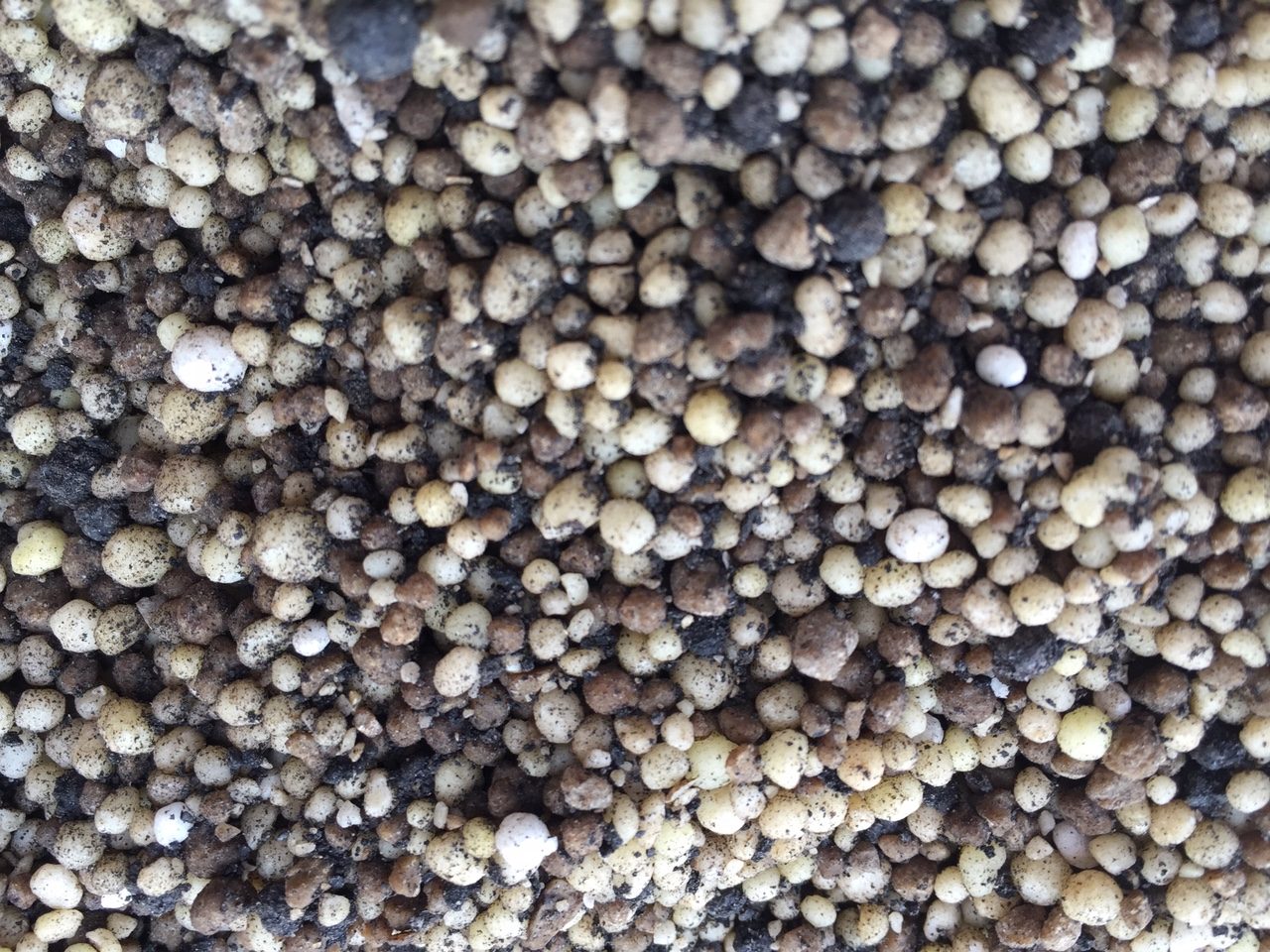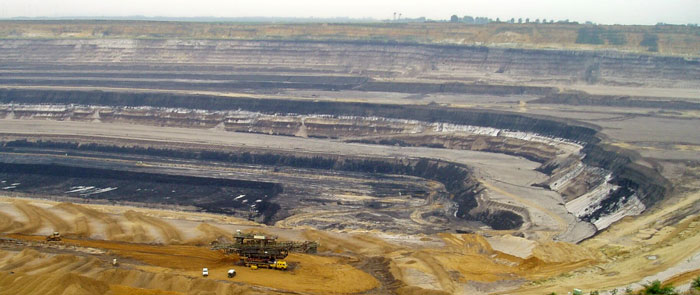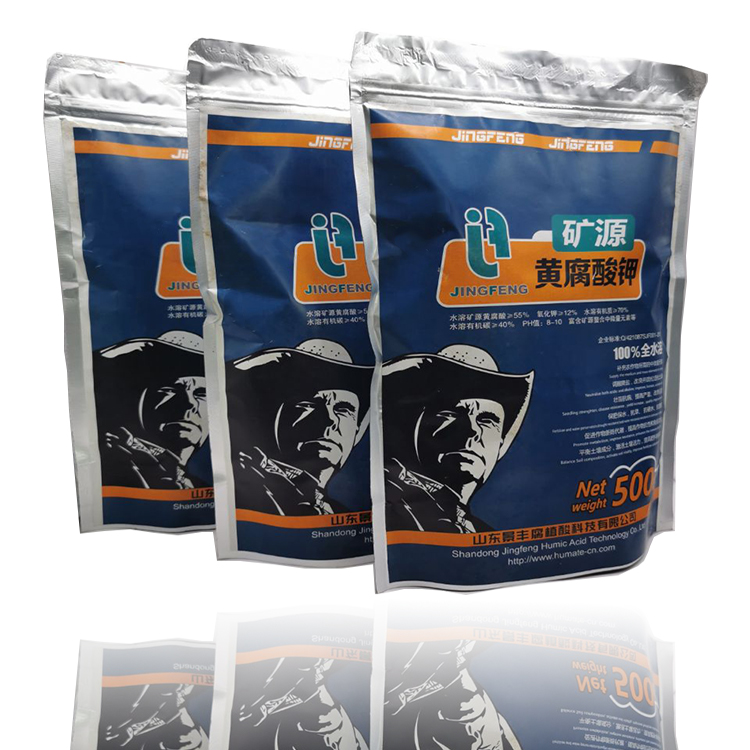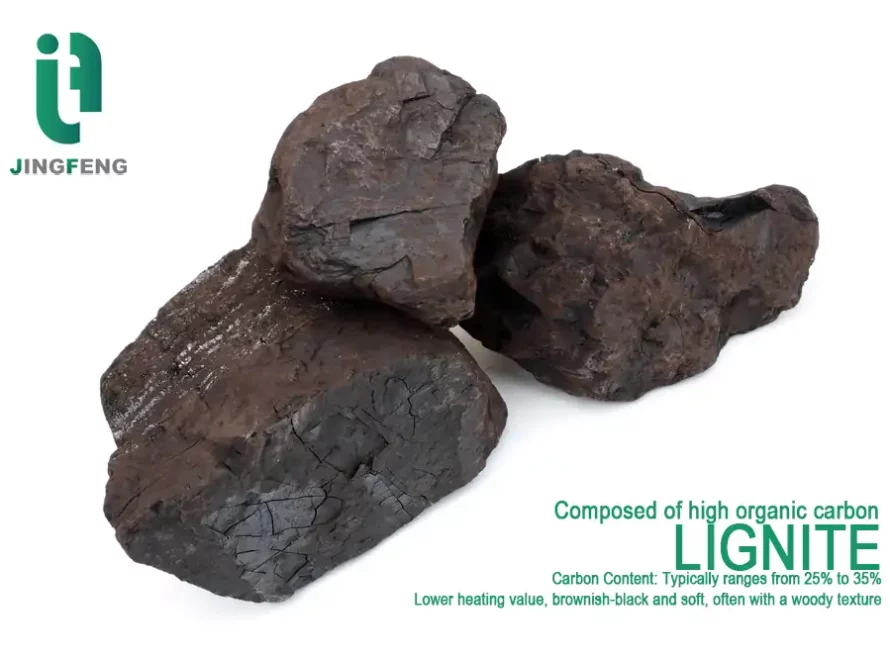Humic fulvic acid fertilizer contains both fulvic acid and humic acid.Total water soluble in water, is generally used for drip, spray or foliar irrigation.
Fulvic acid is the smallest and most active component of humic acid. And it is the essence of the effective ingredients of humic acid. In the practical application of agricultural production, humic fulvic acid fertilizer is the best core component of soil humus. Moreover it has the best stability. It has a small molecular weight, fully water-soluble organic aromatic substance generated by the decomposition of organic matter. It is the best humic acid component in the soil , as well as the core substance that forms the soil aggregate structure.
 Fulvic acid contains functional groups, such as carboxyl group and phenolic hydroxyl group. It has strong complexing, chelating and surface adsorption capabilities, which can reduce the loss of ammoniacal nitrogen. It can increase the movement distance of phosphorus in the soil, inhibit the fixation of water-soluble phosphorus in the soil, convert invalid phosphorus into effective phosphorus, and promote the absorption of phosphorus by roots. And fulvic acid can absorb and store potassium ions and increase the content of effective potassium.
Fulvic acid contains functional groups, such as carboxyl group and phenolic hydroxyl group. It has strong complexing, chelating and surface adsorption capabilities, which can reduce the loss of ammoniacal nitrogen. It can increase the movement distance of phosphorus in the soil, inhibit the fixation of water-soluble phosphorus in the soil, convert invalid phosphorus into effective phosphorus, and promote the absorption of phosphorus by roots. And fulvic acid can absorb and store potassium ions and increase the content of effective potassium.
Experiments show that fulvic acid can increase the utilization rate of nitrogen, phosphorus and potassium nutrients in fertilizers by more than 20%.
-
Synergistic effect of humic fulvic acid fertilizer on nitrogen fertilizer
 The active groups of fulvic acid are generally electron donors, and they can easily form coordination compounds with many electron acceptors, called complexes or chelates. For example, fulvic acid urea is actually a complex, which can reduce the loss of ammoniacal nitrogen, also improve the utilization rate of nitrogen fertilizer. The oxidatively degraded nitro fulvic acid can inhibit the activity of urease, and reduce the volatilization of urea.
The active groups of fulvic acid are generally electron donors, and they can easily form coordination compounds with many electron acceptors, called complexes or chelates. For example, fulvic acid urea is actually a complex, which can reduce the loss of ammoniacal nitrogen, also improve the utilization rate of nitrogen fertilizer. The oxidatively degraded nitro fulvic acid can inhibit the activity of urease, and reduce the volatilization of urea.
The addition of humic fulvic acid fertilizer in ammonium bicarbonate can reduce the nitrogen volatilization rate of ammonium bicarbonate from 13.1% to 2.04% in 6 days. In the field experiment, the effect of ammonium bicarbonate was maintained for more than 20 days, and the ammonium fulvic acid was up to more than 60 days.
When nitrogen and fulvic acid are sufficient, plants can synthesize more protein and promote cell division and growth. Therefore, the leaf area of plants grows fast, and more leaf area can be used for photosynthesis. It has obvious effect on promoting the growth of plants. Often after application, the leaf color quickly turns green and growth increases.
-
Synergistic effect of humic fulvic acid on phosphate fertilizer
 Degraded nitro fulvic acid can increase the distance that phosphorus moves in the soil, inhibit the fixation of water-soluble phosphorus in the soil, convert ineffective phosphorus into effective phosphorus, and promote the absorption of phosphorus by roots.
Degraded nitro fulvic acid can increase the distance that phosphorus moves in the soil, inhibit the fixation of water-soluble phosphorus in the soil, convert ineffective phosphorus into effective phosphorus, and promote the absorption of phosphorus by roots.
Using humic fulvic acid fertilizer to protect water-soluble phosphate fertilizers, or phosphorus-based compound fertilizers to reduce phosphorus fixation, promote phosphorus absorption and improve phosphorus fertilizer utilization.
Fertilizer efficiency test shows that adding 10-20% this product to ordinary calcium, heavy calcium or ammonium phosphate can increase fertilizer efficiency by 10-20%, and increase phosphorus absorption by 28-39%.
The radioactive phosphorus tracer test determines the utilization rate of phosphate fertilizer. After adding humic fulvic acid fertilizer, the utilization rate of phosphate fertilizer in the season increased from 15.4% to 19.3%, that is, the utilization rate of phosphate fertilizer increased by a quarter.
Fulvic acid combined with phosphate fertilizer participate in photosynthesis, respiration, energy storage and transmission, cell division, cell enlargement and other processes in the plant.
-
Synergistic effect on potash fertilizer
 The acidic functional group of fulvic acid can absorb and store potassium ions, reducing the amount of potassium lost with water in sandy soil, and soil with strong leaching. Thus to prevent the fixation of potassium by clay soil, and increase the quantity of exchangeable potassium.
The acidic functional group of fulvic acid can absorb and store potassium ions, reducing the amount of potassium lost with water in sandy soil, and soil with strong leaching. Thus to prevent the fixation of potassium by clay soil, and increase the quantity of exchangeable potassium.
Fulvic acid has a corrosive effect on potassium-containing minerals, slowly increasing the release of potassium, and increasing the soil available potassium content. Humic Fulvic acid fertilizer can also use its biological activity to stimulate and regulate the physiological metabolic process of crops, increasing the potassium absorption by more than 30%.
The combination of fulvic acid and potassium can promote photosynthesis, can significantly increase the absorption and utilization of nitrogen by plants, ,quickly convert it into protein, ,can also promote economical water use by plants.
-
Promote the absorption of micro-fertilizers and effectively solve the deficiency of nutrients
 In the process chelation, trace elements form fulvic acid chelate has strong mobility, and is easily absorbed by crops. And it will be transmitted to the part of the crop that lacks nutrients, effectively solving the lack of nutrients.
In the process chelation, trace elements form fulvic acid chelate has strong mobility, and is easily absorbed by crops. And it will be transmitted to the part of the crop that lacks nutrients, effectively solving the lack of nutrients.
Crop growth and development require not only nitrogen, phosphorus, potassium and other macroelements, but also trace elements such as iron, boron, manganese, zinc, molybdenum, and copper. They are the components of a variety of enzymes in crops, which have an important impact on promoting the normal growth and development of crops, improving disease resistance, increasing yield and improving quality. Most of the trace elements in the soil are in an ineffective state, and it is difficult for plants to absorb, trace element fertilizers is easy to be fixed by the soil.
Studies have pointed out: Fulvic acid can chelate with iron, zinc and other trace elements to form a fulvic acid trace element chelated fertilizer, which has good solubility and is easily absorbed by plants, such as fulvic acid zinc, fulvic acid Mn , Fulvic acid Fe, etc. They are beneficial to the absorption of roots or leaves, and can promote the movement of trace elements from roots to above ground.
Tests show that the number of iron fulvic acid entering the plant from the root is 32% more than ferrous sulfate. and the moving number in leaves is twice of ferrous sulfate. Increased the chlorophyll content by 15-45%, effectively solving the problem caused by iron deficiency Yellow leaves.
As a plant growth regulator,humic fulvic acid fertilizer is the best component of soil humus. It can not only reduce the burden on crops, increase soil fertility, and enrich the substrate of soil bacteria, but also increase the yield and quality of crops to help companies achieve the long-term development goals of increasing production, improving quality and cultivating land. So as to solve the quality problem of crops.







